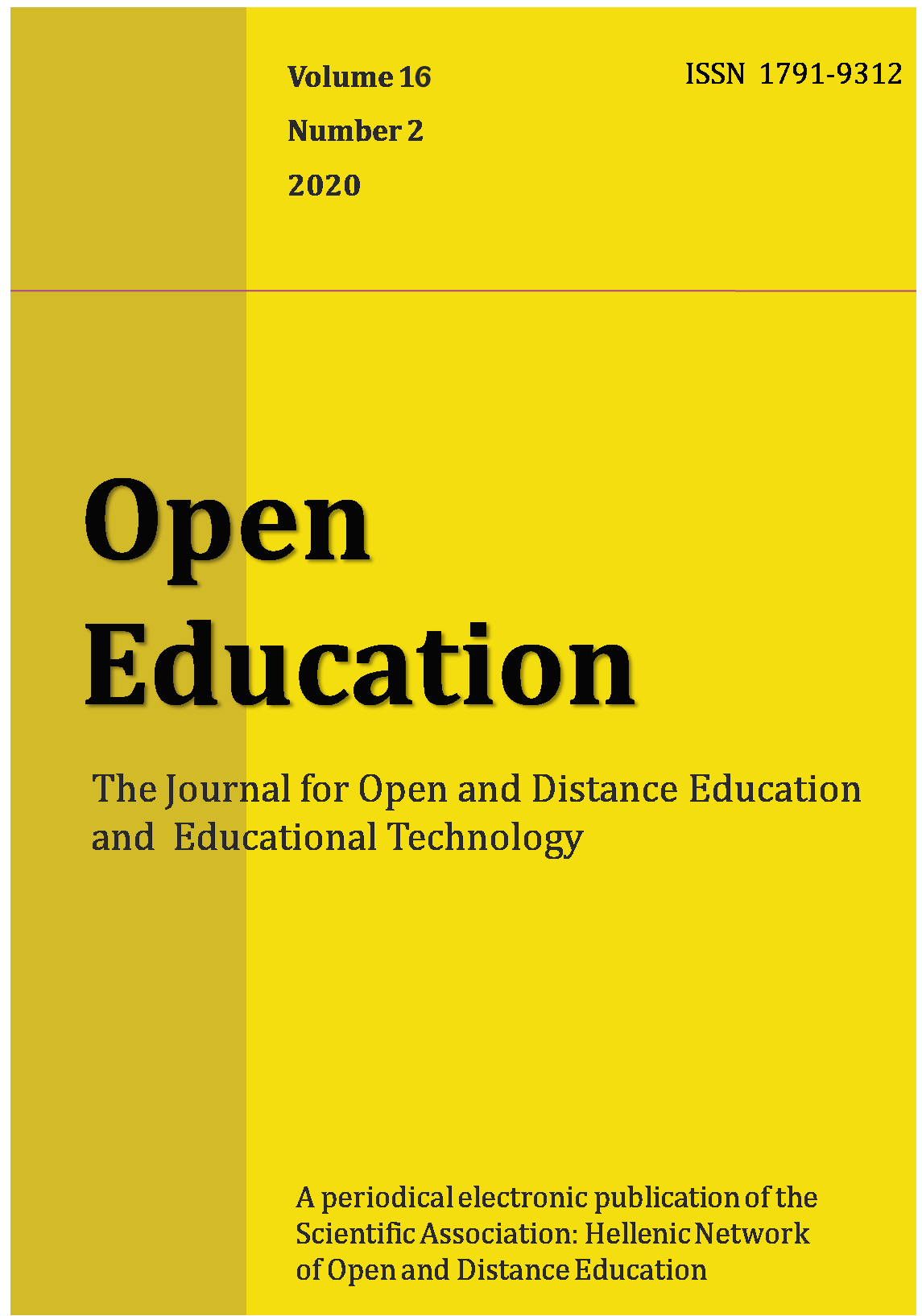Διαδραστική απόσταση: Μια συστηματική επισκόπηση
Abstract
Περίληψη
Η παρούσα εργασία επικεντρώνεται στη μελέτη της έννοιας της διαδραστικής απόστασης, όπως αυτή περιγράφεται μέσω της βιβλιογραφικής επισκόπησης που πραγματοποιήθηκε τόσο σε ελληνόγλωσσες όσο και σε ξενόγλωσσες βιβλιογραφικές πηγές. Ειδικότερα, η παρούσα επισκόπηση στρέφει το ερευνητικό της ενδιαφέρον στη διερεύνηση των παραγόντων που επιδρούν στη διαδραστική απόσταση που βιώνουν οι διδάσκοντες και οι εκπαιδευόμενοι ενώ παράλληλα δίνεται έμφαση στις σύγχρονες ερευνητικές εξελίξεις γύρω από την μελέτη της έννοιας. Ζητούμενο της παρούσας μελέτης δεν είναι να εξαντληθεί το σύνολο των βιβλιογραφικών αναφορών για τη διαδραστική απόσταση αλλά κυρίως να αναδειχθούν οι παράγοντες που δύνανται να βελτιώσουν την αποτελεσματικότητα της μάθησης μέσα από τη μεταβολή της διαδραστικής απόστασης. Τα ερευνητικά ερωτήματα στα οποία προσπαθεί να απαντήσει είναι: α)Ποιοι παράγοντες είναι δυνατόν να οδηγήσουν σε μεταβολή της διαδραστικής απόστασης που βιώνουν οι διδάσκοντες και οι εκπαιδευόμενοι που συμμετέχουν σε εξ αποστάσεως, μικτά αλλά και σε παραδοσιακά εκπαιδευτικά περιβάλλοντα; β)Εντοπίζονται διαφορές στη διαδραστική απόσταση που βιώνουν διδάσκοντες και εκπαιδευόμενοι οι οποίοι συμμετέχουν σε διαφορετικά εκπαιδευτικά περιβάλλοντα; γ)Ποιοι παράγοντες επηρεάζουν τις μεταβλητές του διαλόγου, της δομής και της αυτονομίας; Αρχικά, γίνεται μια σύντομη αναφορά του θεωρητικού πλαισίου, στη συνέχεια περιγράφεται το μεθοδολογικό πλαίσιο και καταγράφονται συνθετικά τα αποτελέσματα της βιβλιογραφικής επισκόπησης, τα οποία οδηγούν σε χρήσιμα για την εκπαιδευτική διαδικασία συμπεράσματα.
Article Details
- How to Cite
-
Χαλκίδου Σ., & Γασπαρινάτου Α.-Ά. (2020). Διαδραστική απόσταση: Μια συστηματική επισκόπηση. Open Education: The Journal for Open and Distance Education and Educational Technology, 16(2), 67–88. https://doi.org/10.12681/jode.22302
- Issue
- Vol. 16 No. 2 (2020)
- Section
- Section 1
Copyright Notice
Authors who publish with this journal agree to the following terms:
Authors retain copyright and grant the journal right of first publication with the work simultaneously licensed under a Creative Commons Attribution Non-Commercial License that allows others to share the work with an acknowledgement of the work's authorship and initial publication in this journal.
Authors are able to enter into separate, additional contractual arrangements for the non-exclusive distribution of the journal's published version of the work (e.g. post it to an institutional repository or publish it in a book), with an acknowledgement of its initial publication in this journal.
Authors are permitted and encouraged to post their work online (preferably in institutional repositories or on their website) prior to and during the submission process, as it can lead to productive exchanges, as well as earlier and greater citation of published work.



